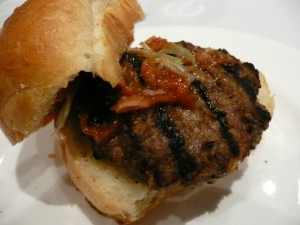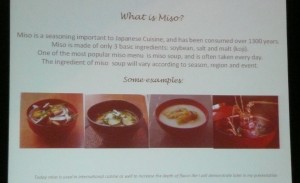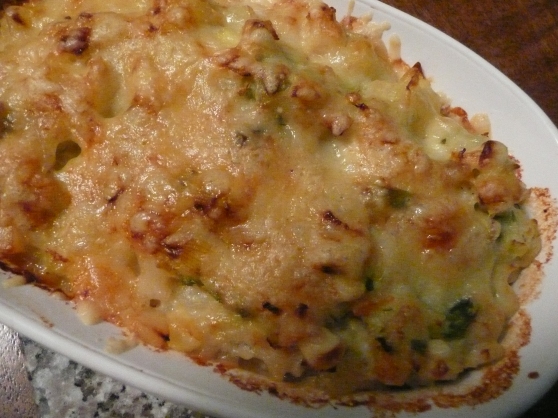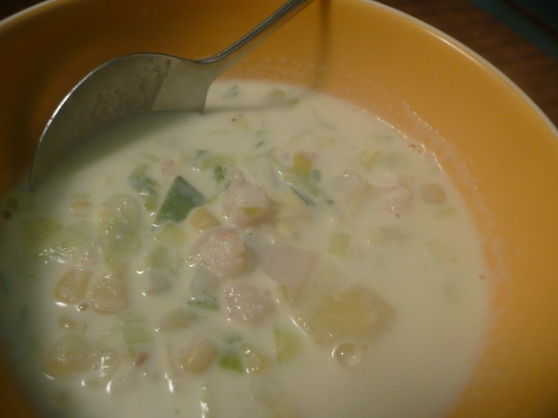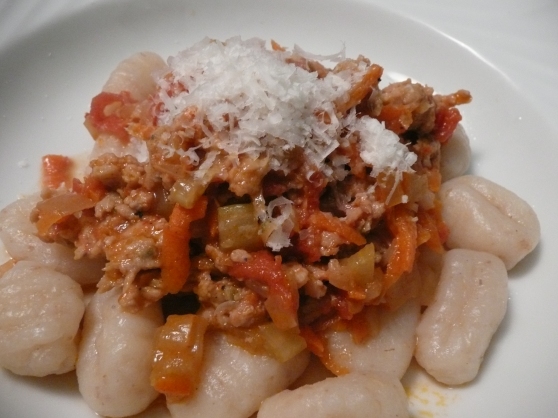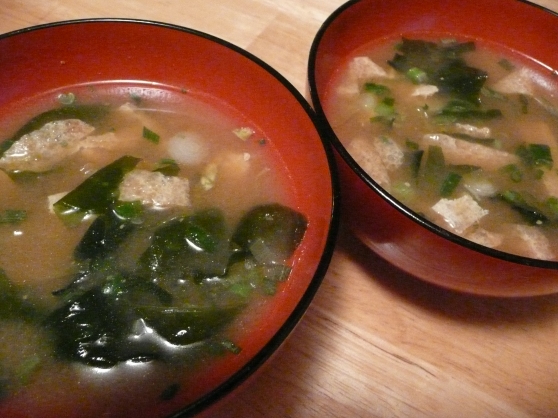
Thank you so much for your comments on what do you think the pan is for, and what would you fill in these…
I was amazed by your creativity, and all the possibilities the pan offers. Your answers certainly made me (and many others) very hungry…
The answer is…. As quite a few of you guessed, Aebleskiver pan!
You may ask “What is Aebleskiver?” Aebleskiver are Danish round pancakes that are often eaten before Christmas. (<- Click here for Wikipedia definition of Aebleskiver.)
As some of you may remember from my post of FoodBuzz Blogger Festival in November, the guy in the red outfit, living somewhere very cold up North sent the pan and mix around Thanksgiving as early Christmas presents. This is one of the perks as a Featured Publisher at FoodBuzz. I get to try many cool things and restaurants and write about it.
This is my Skiver Santa, Chad Gillard from Aunt Else’s in Minnesota.

I’ve been having fun with this every weekend, which I call Skiver Saturday or Skiver Sunday. The best part is, these Aebleskivers are great not only for traditional apple slices, but with almost anything. As you know, I love varieties and experimenting! That’s why you may have already seen a few photos of them with many different things on top on Facebook, etc. I never get bored. And now I have even more ideas, thanks to you, I will be able to have fun with it for a very very long time!
When I’m at home, these are the things I gather on typical weekend.
Gorgonzola cheese, cheddar, chicken, sliced turkey, shrimp, cramberry apple batter, sauteed mirepoix and sauteed leeks. And of course one each of apple, banana and nutella.
When we tried this first at our friends over Thanksgiving, I didn’t want to bother our friends with their computer password, I wanted to try so bad, I didn’t watch the video on AuntElse Website, they stuck really badly, and some of the got burnt as well. Since then, My Skiver Santa has given me a pointer from the Northern land, so I now heat the pan for 10-15 min at low-medium heat as soon as I wake up.
As soon as we pour the batter, it puffs up pretty quickly, so I put all these fun and different fillings in each well. Can you tell I pefer savory food to sweets, and lots of varieties?
The trick is to:
1. Season the pan well in advance, and use enough oil.
2. Heat the pan at medium low heat for 10 – 15 minutes until hot. (Set the timer and prepare the filling during that time. If you still have time, watch the video one more time, and learn how to turn.)
3. Aunt Else mix puffs up a lot quickly. I recommend pouring about 2 TBS batter in each well, starting from the four corners, then middle four, and the very center well at the end.
4. After adding the filling, if it doesn’t come up to the rim, add a little more. (The amount on the photo is a bit on the generous side, especially on the top row. In my opinion,i t’s easier to turn if there’s no batter going outside of the well.)
5. For perfectly round skivers, do the quarter turns as in the video. If you try to flip the entire thing 180 degrees, you’ll end up with half dome shaped skivers. : (
It’s really important to pull the skivers UP 90 degrees, then they release itself like a magic! Before I was trying to separate the balls from the wall, and that made them stick toghether more. Every minutes or so, I pull them up another 90 degrees, and when you are finished with all four turns, you will have a perfectly round Aebleskivers!
Just like these!
Look at all these different fillings! So much fun!

Our favorites were:
- Trader Joe’s Cranberry Apple Butter
- Gruyere Cheese
- Apple slices
- Caramelized onion and gruyere cheese (Like French Onion soup)
Sounds strange but defintely my favorite:
- Green onions, drops of Kikkoman soy sauce, and gruyere as filling, home-made mayonnaise on top (below). I also tried Japanese takoyaki or okonomiyaki style with green onion and cabbage mixed into batter (I made more traditional Japanese style batter for this instead of AuntElse’s Aebleskiver mix for this) with seafood etc in it. That was quite delicious as well.
Aebleskivers are very similar to pancakes or crepes, so you can fill with anything you’d wrap with your crepes. With so many options, this can be eaten for breakfast, brunch, lunch, dinner or dessert. I told you, I love things that can be flexible and optimized. I like the fact that you can have so much fun making it too. This definitely passed my test! Next time, I’ll try sauteed mushrooms, seafood with cream sauce etc. (Use leftovers, since you need so little.) My husband thought I’m weird, but I’m contemplating using a meatball or quail egg as well. You know, just like a Scotch Egg! Will see.
In terms of savory or sweet question, I found Aunt Else’s mix very versatile, it works for both… just like a good crepe batter! You can certainly add more sugar or salt if that’s what you prefer, but I found it just right.
If you like it sweet, my guess is Japanese anko — sweet red bean paste will be great in Aebleskiver. We have similar street snacks called Tai-yaki (Tai Snapper shaped pancake sandwich with anko in it) and Dora-yaki (two round pancakes filled with anko), and Imagawa-yaki (Flattened version of Aebleskiver?) Click each link to see the photos to see the difference.
For 2 of us, we just do one batch (1/2 of the amount of the smallest batch measurement on the back of the bag), and that’s plenty for brunch. All you need per batch is one egg, 1 cup of water, and a scant cup of Aunt Else’s mix, which is made of organic whole wheat flour. Even though you don’t have to whip up the egg white like some other Aebleskiver mix, it’s perfectly fluff. It works great for both savory and sweet fillings. It’s really fun activity especially with kids (of all ages).
So in our household, Saturdays and Sundays are Skiver Days!
Can I tell you a funny story about this?
In my determination to not to break that new tradition, and my desire to share this fun activity with our niece and nephew, I even dragged that heavy cast iron Aebleskiver pan from the Bay Area to Milwaukee for our Christmas visit. The problem is, the suitcase that had our pan in it decided to spend some time in warmer climate, and ended up in El Paso, TX. The good news is, after spending 2 days of us worrying about the whereabouts of my favorite new toy/kitchen tool, our luggage was found at the snowing, fridged door steps of my in-laws. (Geez, guys! It has something very VALUABLE!) Well, this is surburban Milwaukee, not Oakland, CA. Fridged means there’s no one hanging out to steal it. Plus, these people are very friendly and nice, they often don’t even lock their door!
Anyway, I found this note in our luggage… and the box we had the skiver pan was opened, and searched… These curious inspectors might have even made a few batches of Aebleskivers… Who knows? Well, it was the same day (Christmas day) when they had the fire scare in the plane, so I consider it a good thing.
Oh… Our generous Skiver Santa wants YOU to have fun with your own Skiver set. One lucky reader will get an Aunt Else Aebleskiver Starter Kit (both pan and the mix)!
He also want you to learn more about Aebleskivers and ask questions. So I am hosting a phone interview with Chad Gillard (aka Skiver Santa), the President of Aunt Else’s Aebleskivers and you are invited! Don’t miss this unique opportunity. Invite your friends and family too.
All the details will be posted next week, including how to increase the chance of winning. (Wouldn’t you be most curious about this? I would!) Make sure to subscribe to Secrets of the Kitchen Wizard by email (sidebar, scroll down just a bit), so that you will be the first one to know.
In the mean time, please write to our “Skiver Santa” at C.O.mment Box of this post about:
1. What you may want to do with the Skiver Starter Kit?
2. Why you should be the one to win the kit?
Again, one comment counts as one point. Come up as many ideas and keep posting comments. You are welcome to go back to these 2 posts about 1. Aebleskiver pan , and 2. filling, and post more ideas.
Santa is watching….
Good luck and have a great weekend!






